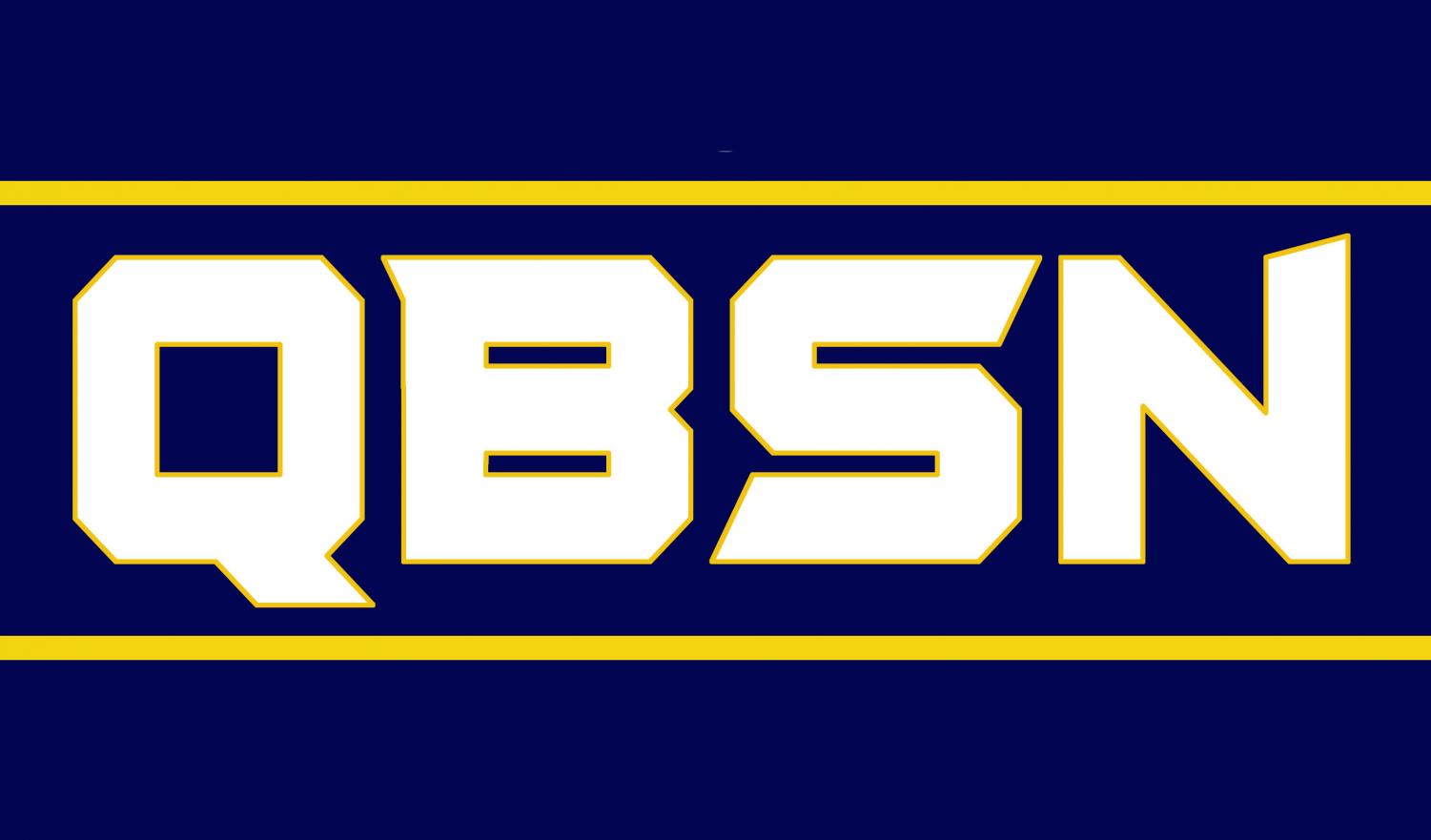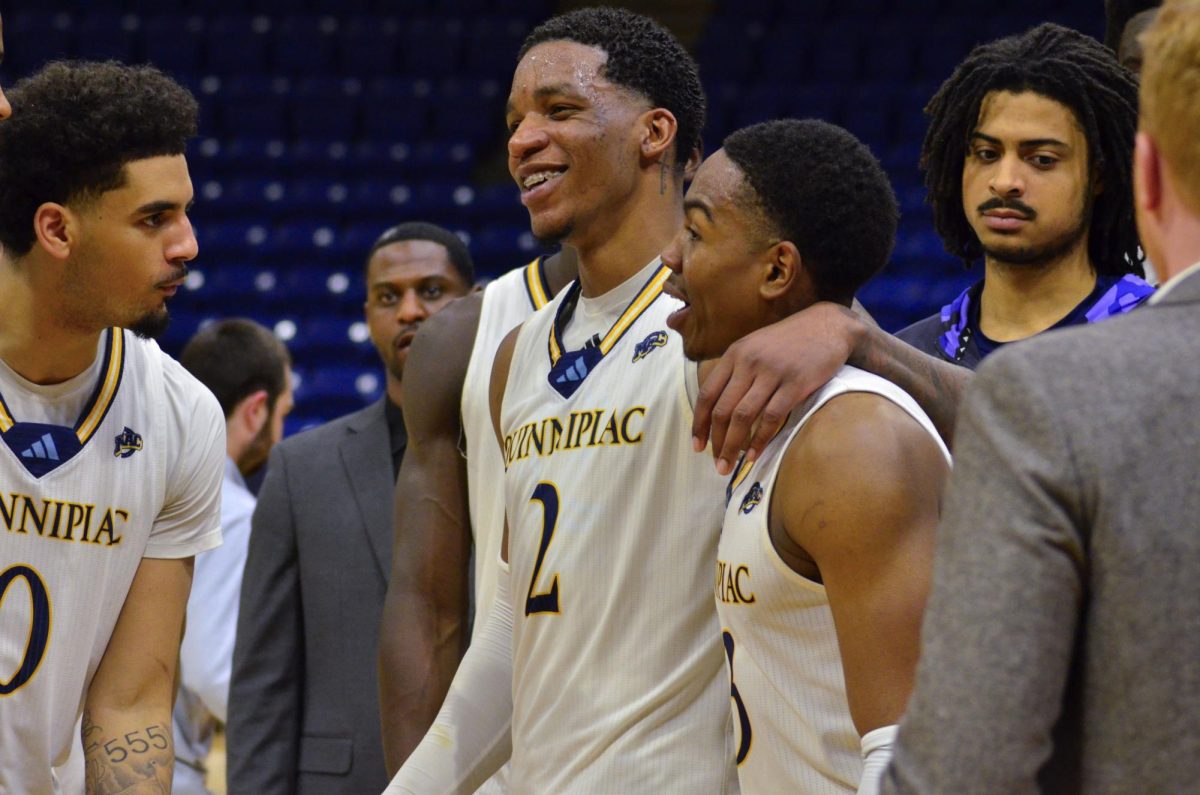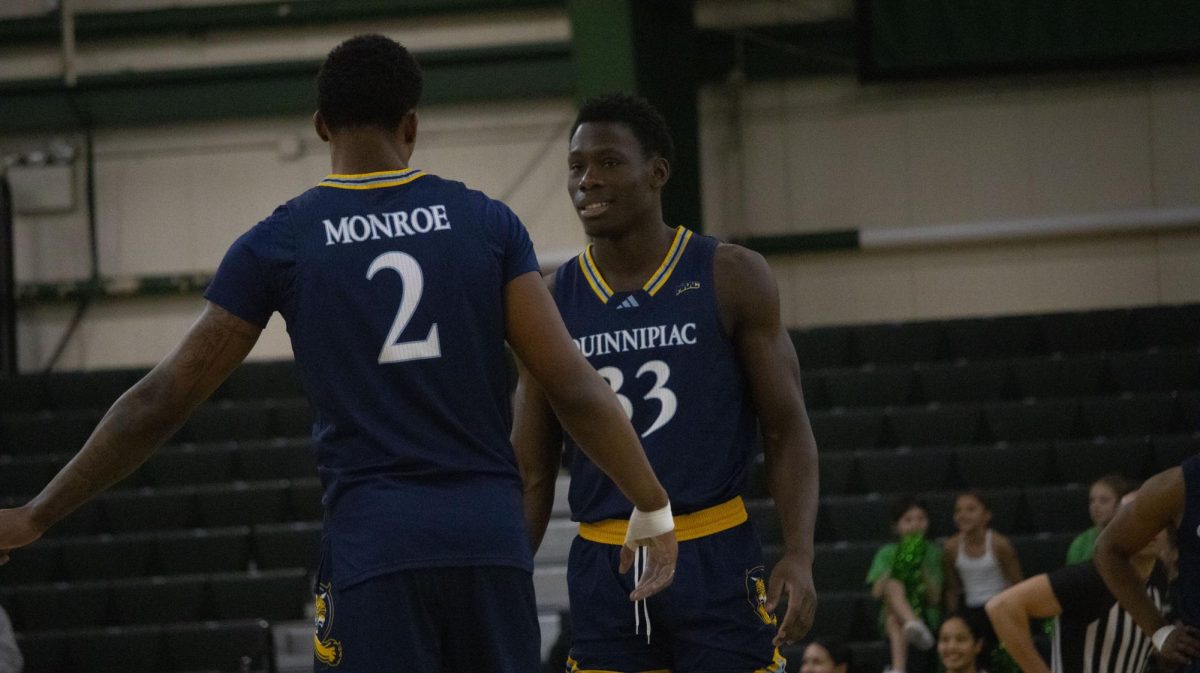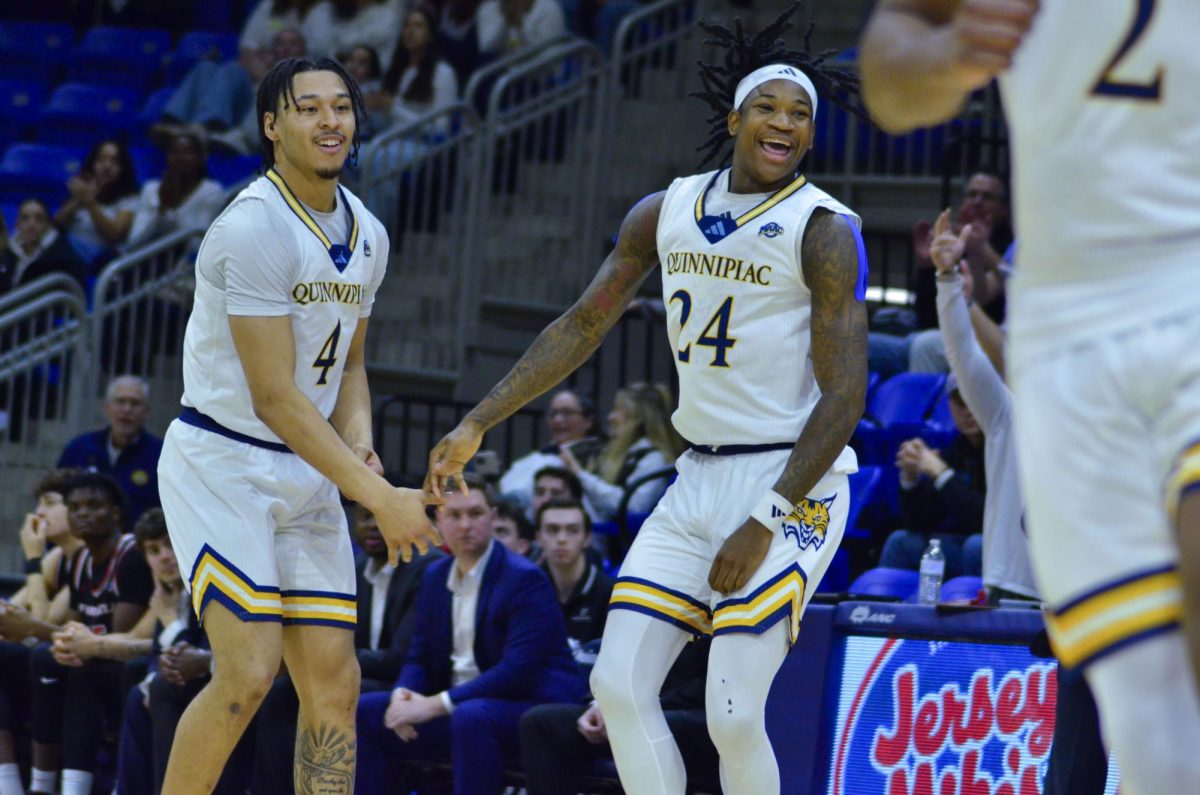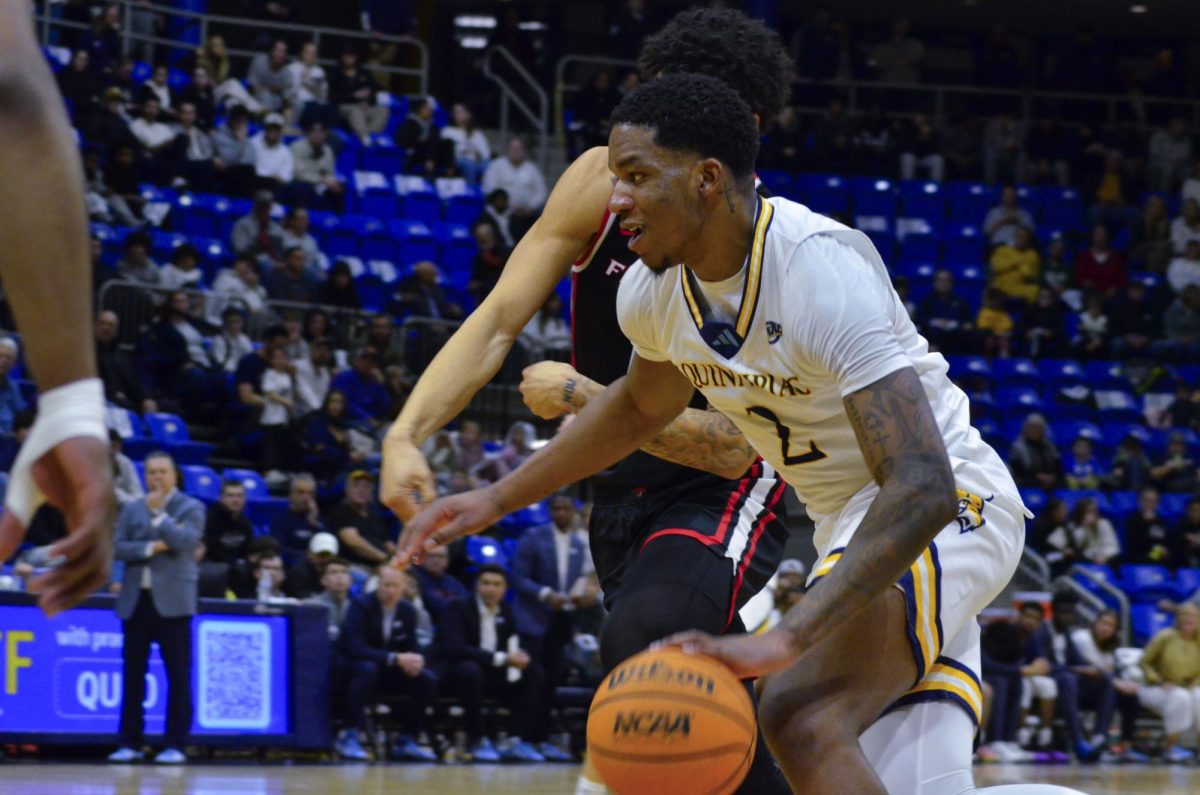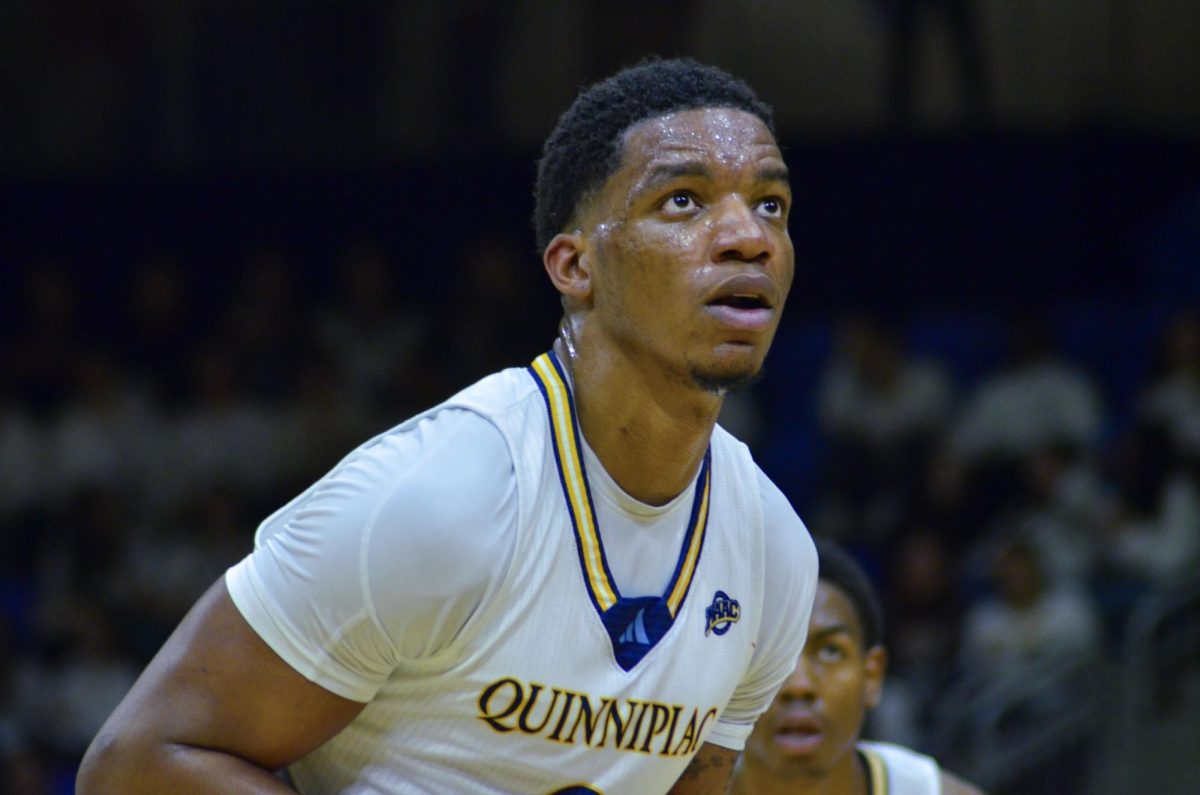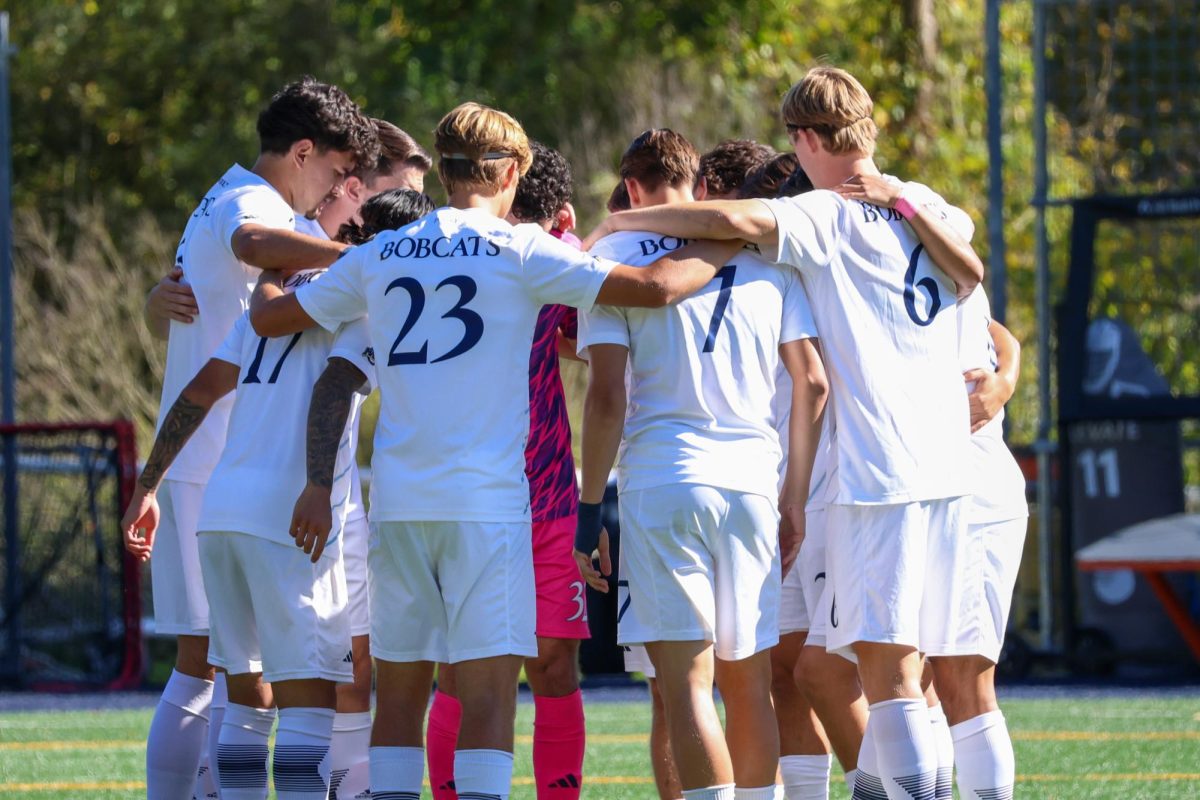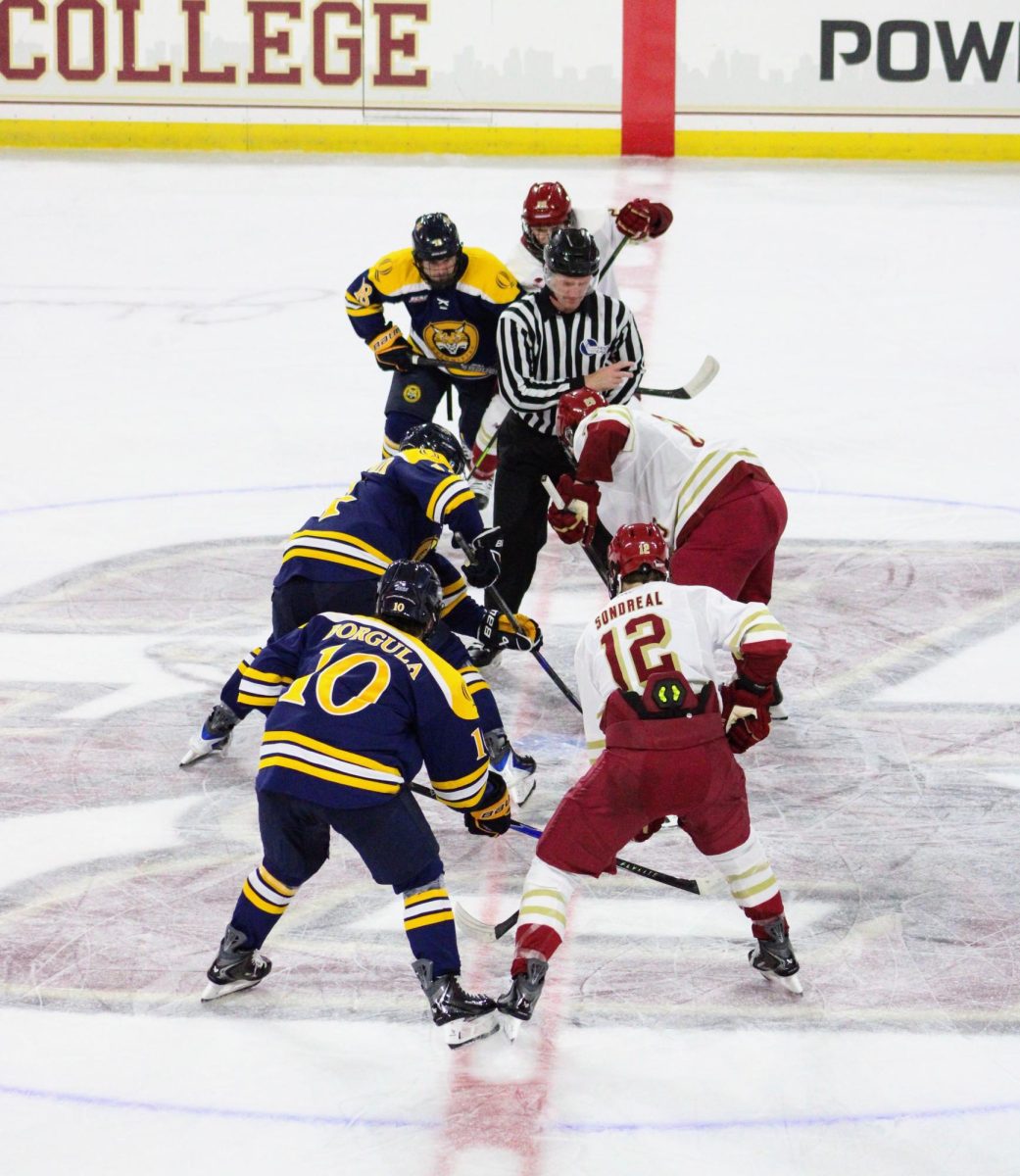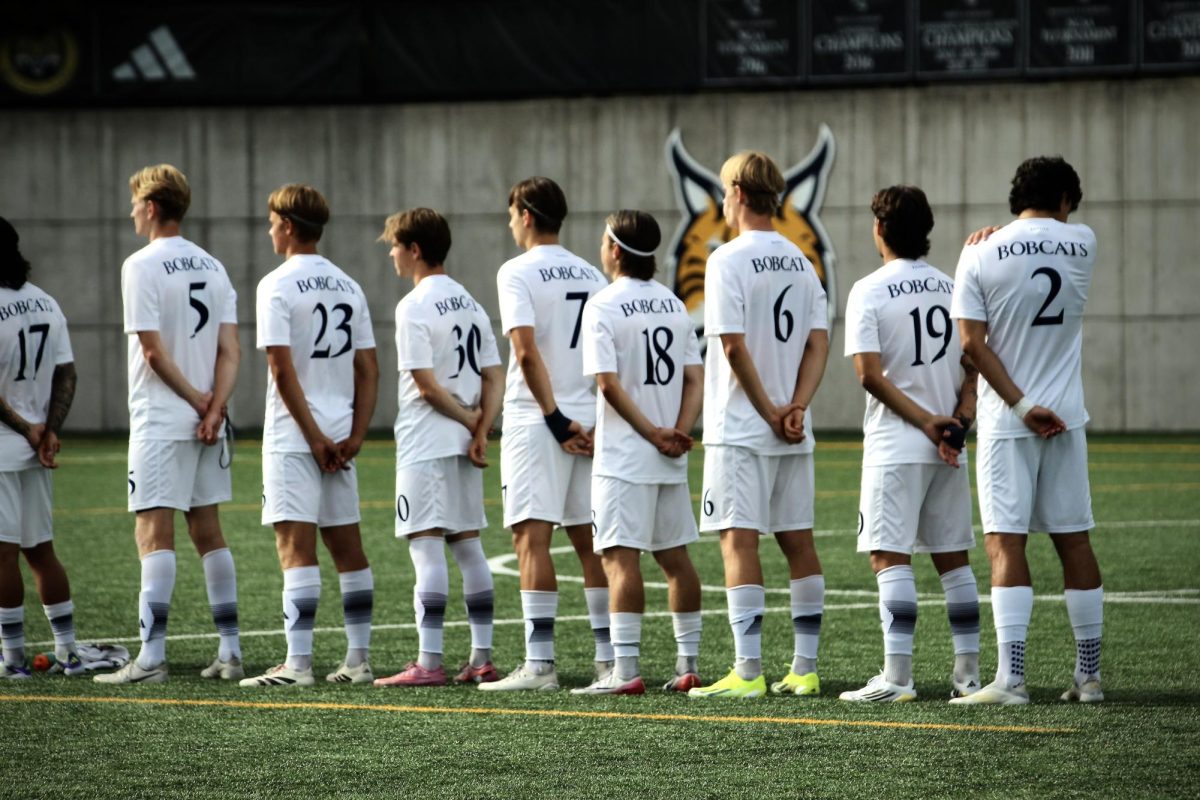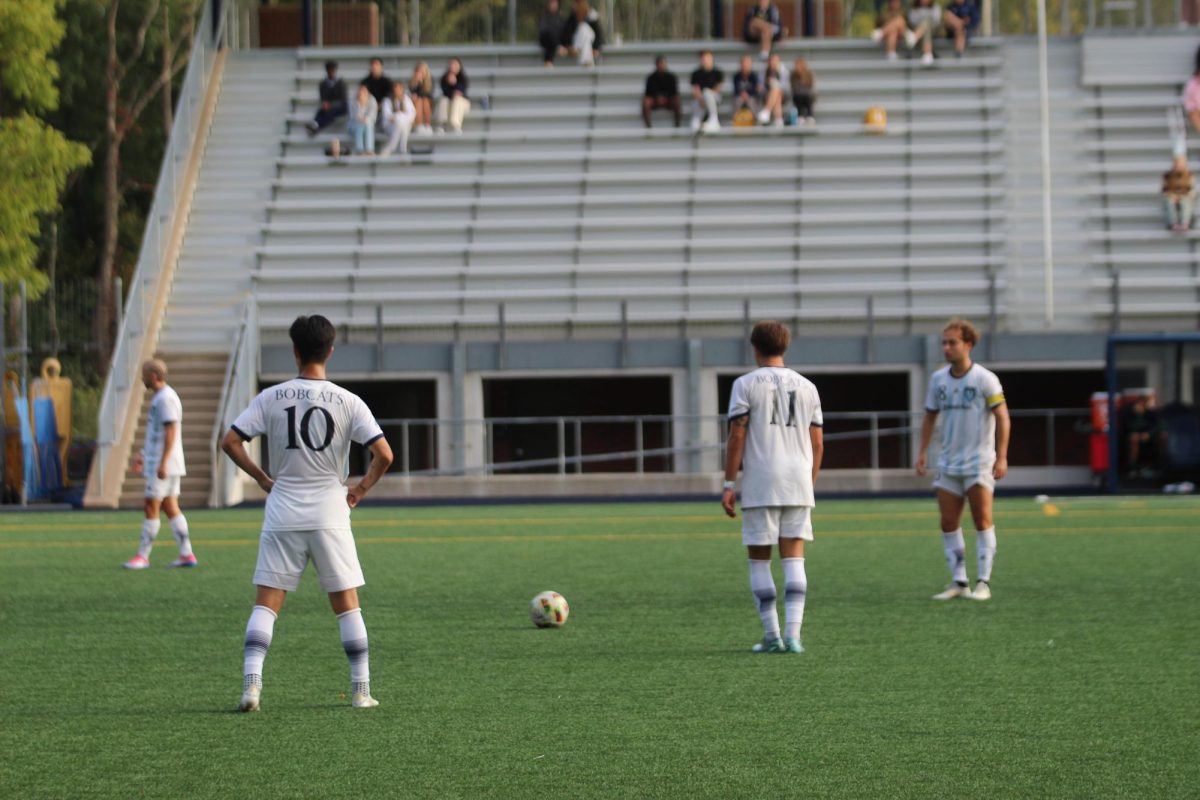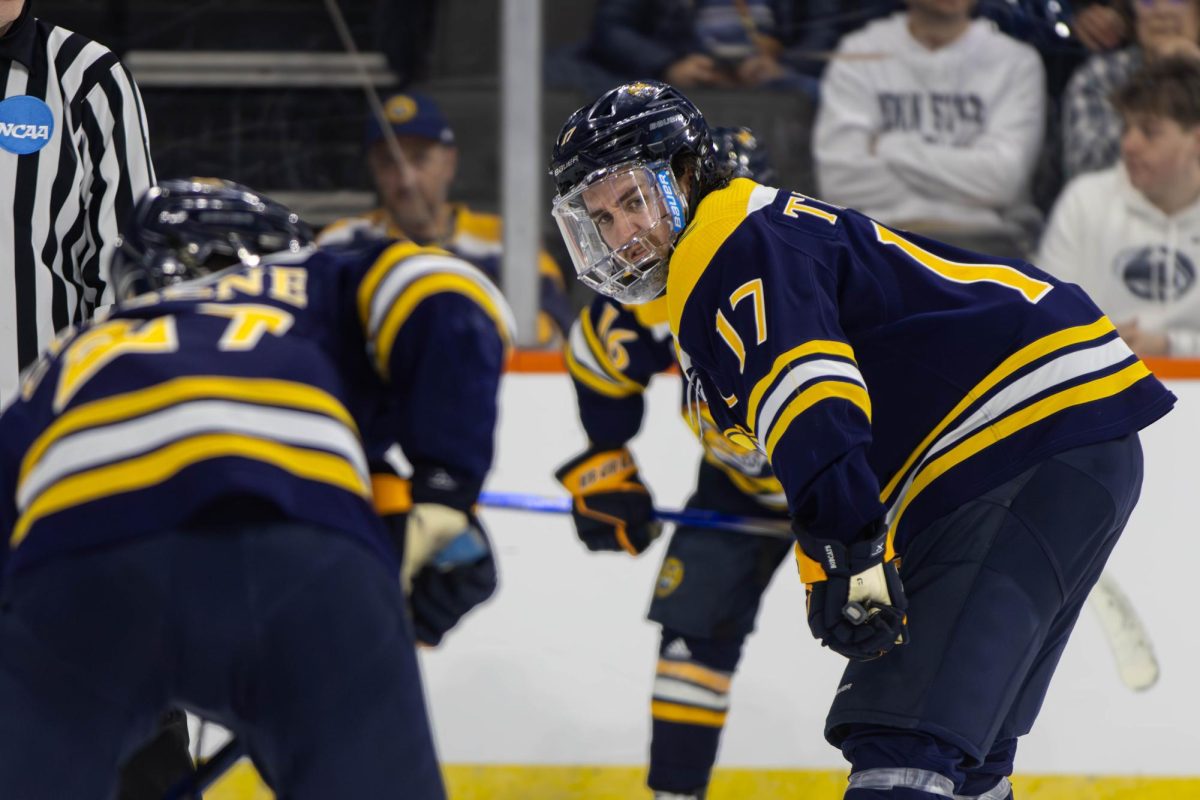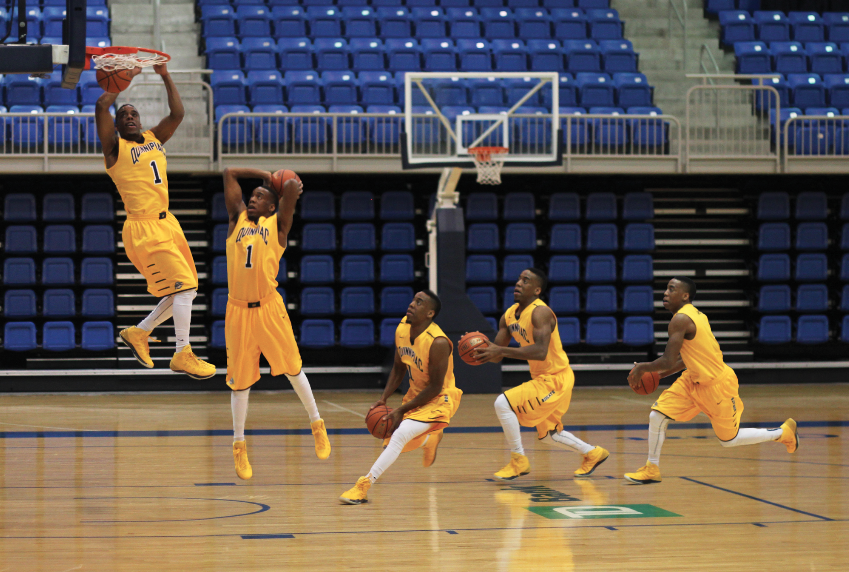
It’s a popular misconception: student-athletes live a life of royalty, paved by essay-writing tutors and coddling professors – that all they need to focus on are sports; the rest is simply optional. Yet most athletes are diligent students, bombarded with daily responsibilities that appear unconquerable. Enter 6-foot-4 senior guard, Zaid Hearst, captain of the Quinnipiac men’s basketball team.
7:45 a.m.
Hearst gets up out of his undersized bed and wipes the cold out of his eyes. He puts his socks on, one at a time, and brushes his teeth. He sets the tone of his morning by greeting his fellow roommates, who double as his teammates.
That’s when he has to make possibly the most important decision of his day: deciding what to fuel his body with. The stove-top could be put to good use, but who thinks about using those at such a dreadful hour? Cereal or fruit will be the question, but the potassium of the latter will most likely keep him holding the ball rather than his hamstring.
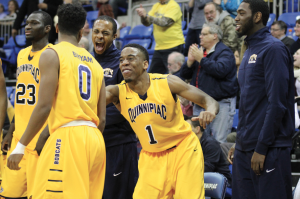
Grabbing his Q-card and cell phone, Hearst makes his way out the door.
Tom Moore, head coach of the team, waits for his captain to walk through the door to watch tape of what seems like Hearst’s every move since they were last together. Detailed examination of his most recent performances, compiled by review of the upcoming opponents’ habits and tendencies, are crammed into his head for pure preparation purposes.
“It’s definitely important from a confidence standpoint when you go against your opponent and you know he hasn’t put in as much work,” Hearst says. “I matchup with somebody on the court and I know I already have my opponent beat.”
After going over the X’s and O’s, Hearst heads to the caregivers stationed in the athletic training room. Here they mend any aches and bruises he may have tacked on during his MAAC Offensive Player of the Year campaign – because in his mind, “If it’s not broken, you can still play.”
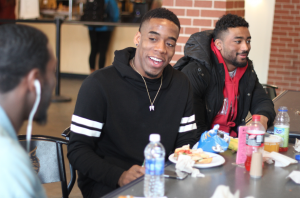
12:30 p.m.
Hearst escapes to a place where he can forget all his troubles.
His team assembles on Lender Court at the TD Bank Sports Center to complete a day’s practice. Filled with calisthenics, drills and tactics, Moore and his team engage in all the lively competitions one would expect from a top tier Division I program. This is where the cliché blood, sweat and tears are exhausted from both the starters and role players in preparation for the team’s next game.
3 p.m.
Hearst jumps in his mother’s white Nissan Altima, which he’s named Casper, and makes his way down York Hill to the Mount Carmel campus to grab a bite to eat.
“I have a 30 minute window to get food and make it to class,” Hearst says.
And those 30 minutes are binding.
Hearst makes sure he arrives to class on time. It’s a mistake he made once – and only once – before.
“Oh no, oh no, I will never skip,” he says, shaking his head. “I came late to class my freshman year and my academic advisor told coach Moore. Coach Moore said, ‘If you’re late again, then your whole team will run for it.’ So we will never miss class.”
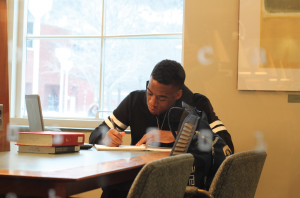
4:45 p.m.
Hearst leaves class and heads to any quiet place on campus to knock out unfinished work his professors have assigned. Being a student-athlete is not only significantly time-consuming, but also draining. When a regular student is able to drop their bags and contemplate a nap after a long day of classes, a student-athlete, like Hearst, is likely getting ready to endure a second round of classes.
Not only are student-athletes required to attend classes, but there is also a minimum 2.0 GPA requirement for student-athletes at Quinnipiac – higher than that of the NCAA’s ruling.
“I’m definitely a student-athlete,” Hearst says. “I take care of my studies first and make sure everything gets done before I start worrying about everything I have to do with basketball.”
7 p.m.
After his studies are taken care of, Hearst and his teammates seek to fulfill the 10,000 hours of their own “shooting club.” He and a couple of veteran teammates take advantage of their open gym and put the work in on their own time. His hard work pays off – Hearst ranks amongst the top four in the MAAC in points per game.
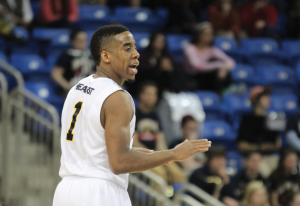
His training never ends. His undeniable work ethic even drove the 22-year-old to get some extra reps in during the remaining hours of his birthday.
This work ethic, he says, was directly passed on from his mother, Tanya.
“She works so much and so hard,” he says. “Just seeing her gut it out even when she’s sick or hurt, she’ll still gut it out for me to keep doing what I do. I just want her to stop working so she can wake up and do what she wants to do. That’s why I keep playing. I’m just hungry.”
That competitive spirit resonates into more than one aspect of his life.
9 p.m.
Hearst and his roommates lounge on their futon, start up the Xbox 1, and turn on EA Sport’s NBA 2K15. What follows is an intense competition – typical to any group of friends – each one hoping to carry out a win, just to be let down in heartbreaking fashion in front of the type of people who will make sure they never forget it.
They tally wins and losses on a large sheet of paper that hangs next to the television, just to remind everyone who really is No. 1.
Some take it harder than others.
“Use T’ziah [Wood-Smith], for example,” he says. “If you beat T’ziah he won’t talk to you for 20 minutes. He’ll walk to his room, slam the door and that’s last you hear from him for an hour. He’ll come back and say he’s got next, and if he loses again, he’ll go to sleep. It’s funny, but it’s serious.”
For the rest of the night, social media serves as their entertainment. They pull up apps like Twitter and Vine until they retire one-by-one to their disproportionate rooms and repeat the process the next day.
GAME DAY
That’s just another Tuesday. Imagine what it’s like on game day.
Sometimes during his season, Hearst plays up to three games a week. It’s a recipe for some serious cramming and a potential mental breakdown. Fortunately for Hearst and a couple of his fellow seniors, a little planning with the team’s academic advisor can really make the difference. Hearst, a communications major, has been through the ins and outs of a complex season before. Throughout his spring semester, he has left windows open on both Wednesdays and Fridays to accommodate games that are played throughout the week. Seven out of the 11 weekday games the Bobcats have played this spring semester have fallen on days that he does not have class.
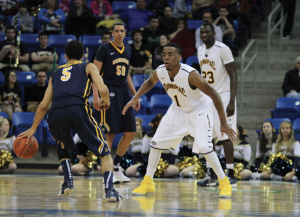
On game day, every moment up until tip-off is filled with excitement over that fact each member of the team will be able to represent his school and family against the best competition in the country. During MAAC play, the tempo and intensity are dually magnified, especially if a team’s non-conference record fell short of expectations.
Hearst, like many other star athletes, attempt to express themselves in more aspects than one.
One look at NBA pre-game coverage shows “celebrity-athletes” who shatter the norms of outerwear – some styles more shocking than others. Hearst, however, puts some limitations on himself.
“I like fashion. I like dressing. I like trying new things,” he says. “I’m not over-the-top like some people, like Russell Westbrook in the NBA. A couple of my teammates were like, ‘Oh you wear cheetah shoes?’ [But] they’re not really up there yet or old enough to understand and try new things.”
He’s the only Bobcat out on the court sporting neon yellow sneakers.
But like Mike said, “It’s not about the shoes, it’s about what you do in them.”
Slowly but surely tip-off approaches and the players make their way to the locker room to go through their routine: pick out their jerseys, shorts, socks and shoes, then make their way to get the athletic training room for gauze and tape.
They come back and shake the hand of every one of their teammates all while listening to their favorite artists through their team colored Beats™ headphones. Hearst usually turns to Jay-Z and Jadakiss. He throws his socks on, left, then right, followed by his shoes in the same order and then proceeds to say a quick prayer. A lecture from their coach is the last bit of exchange they hear right before heading out to be greeted by the lights and screaming fans. They enter to “Made You Look” by Nas, and the rest is solely dependent on them. All the hard work and extra hours are applied to the best of both the team’s and the individual’s abilities, all to achieve a greater goal that was predetermined in adolescence.
“I have dreams and aspirations of the league,” Hearst says, of playing in the NBA. “I know if I get a chance I can make it happen. I know I’ll be there some day. I just I know I’ll be there.”


